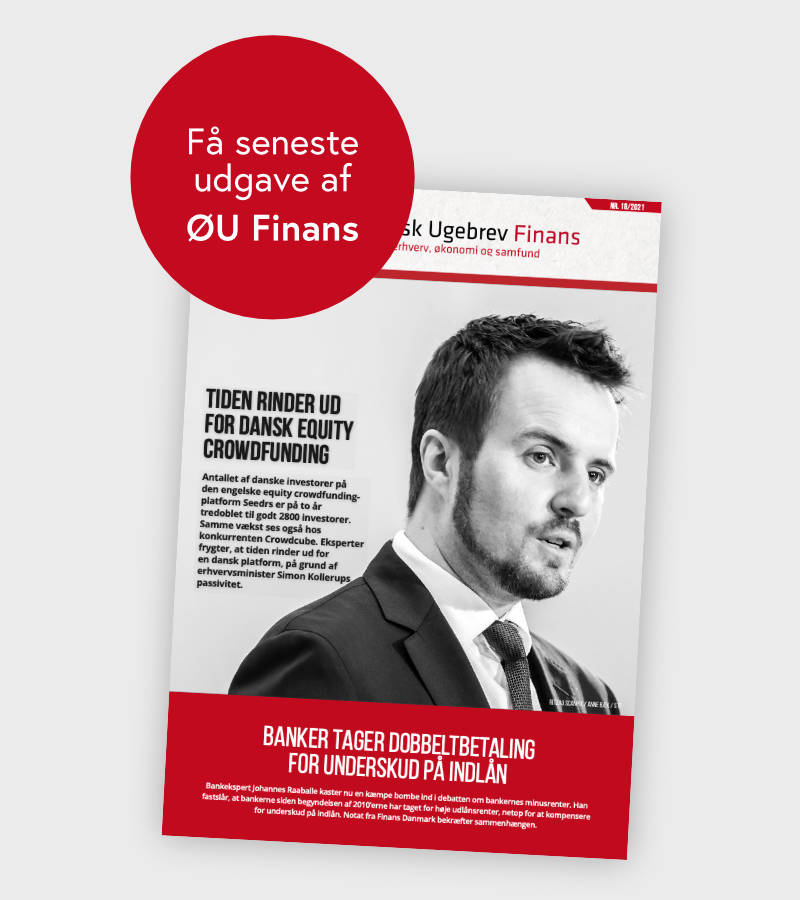Fra
Implications of Silicon Valley Bank Closure
On Friday, March 10, 2023, the California Department of Financial Protection and Innovation shut down Silicon Valley Bank (SVB) and appointed the Federal Deposit Insurance Corporation (FDIC) as receiver.
The FDIC created the Deposit Insurance National Bank of Santa Clara (DINB) and immediately transferred all insured deposits of SVB to DINB. The FDIC announced on March 10 that insured depositors will have access to their insured amounts by Monday morning, March 13, 2023, and that uninsured depositors will be paid an advanced dividend next week and will receive a receivership certificate for their additional uninsured deposits (which is not a guarantee of full repayment). Future payments of remaining uninsured deposits will occur as the FDIC liquidates additional assets. Information about the SVB receivership, how to file claims and links to the FDIC’s claims portal can be found at this link.
The FDIC is an independent U.S. government agency that supervises financial institutions and insures certain customer deposits. FDIC insurance covers certain deposit accounts in an amount of up to $250,000 per depositor for the aggregate of all deposits held by the depositor in each account ownership category. Uninsured deposits rank third in right of payment behind the FDIC in respect of its administrative expenses and the payment of insured deposits, ahead of all other creditors. FDIC receiverships of insured banks are subject to a complex legal and regulatory regime under the Federal Deposit Insurance Act (FDIA). This framework is distinct from the Bankruptcy Code. Other affiliates of a bank that is in receivership may be subject to other bankruptcy or insolvency regimes, which may include the Bankruptcy Code.
Clients are encouraged to consider the potential effects of the entry of a bank into receivership (a Receivership and such bank, a Receivership Bank) may have on their business and contact their relationship partner at Sidley or [email protected] with any questions. Some of these considerations are set forth below.
- Deposits and Depositors With a Receivership Bank
- Sophisticated questions may arise regarding deposit accounts or other customer arrangements with (or through) a Receivership. The assets in certain accounts that are not considered bank deposits (possibly including various “sweep product” and/or custody accounts) may remain partially or fully accessible during a Receivership. The treatment of such accounts will depend on the specific language in the related customer agreements, which should be reviewed carefully, and on the precise name of the account. Clients should consider the implications for the processing of payroll or other outbound banking services.
- Depositors with a Receivership Bank will face different concerns based on whether their deposits are insured or uninsured. Payment to uninsured depositors on account of a receivership certificate will depend on the liquidation of available assets, and the timing and final amounts of payment is uncertain. The resulting impact on corporate liquidity where a company has uninsured deposits that are subject to a Receivership may flow through that company’s loan (and bond) documentation in a number of ways, including the following.
- Immediate Liquidity: To avoid any issues relating to being unable to pay debts when due and payable, borrowers should review their liquidity needs after giving effect to a Receivership and consider interim bridging arrangements to solve for any newly arising projected shortfalls. These arrangements may include (a) new liquidity facilities and/or (b) equity contributions, after taking into account whether such arrangements were permitted under existing loan documents.
- Netting: Cash that may previously have been available for cash netting for financial calculations under applicable loan agreements may no longer be available. Borrowers’ financial teams should review cash netting calculations, including in consultation with their accountants as necessary to determine whether certain cash should now be classified as restricted, and revise as necessary to reflect any cash that will no longer be available for these purposes.
- Letters of Credit/Bank Guarantees (as an account party): If a Receivership Bank issued a letter of credit (or bank guarantee) for the account of a company, such company faces the prospect of the underlying beneficiary seeking a replacement instrument. Borrowers should review their loan agreements to assess whether replacement letters of credit may be issued under such agreements.
- Letters of Credit (as a beneficiary): If a company is a beneficiary of a letter of credit (or bank guarantee) issued by a Receivership Bank, draws on such instrument may be affected. Alternative instruments should be considered.
- Borrower Loans and Commitments Where a Lender, L/C Issuer and/or Agent is a Receivership Bank
- The FDIC has the power in a Receivership to repudiate contracts in certain circumstances. The FDIC is not required, for example, to fund loans, guarantees, or otherwise extend credit in some situations, even when the borrower or beneficiary would otherwise have been entitled to performance in the absence of a Receivership. These future or contingent funding obligations can take multiple forms, including pursuant to a commitment letter or, in the case of revolving credit facilities, delayed draw term loans and letters of credit, a loan agreement itself. The FDIA may impose limits on damages or remedies that are available in these circumstances, so it is necessary to plan accordingly, which may include seeking to arrange alternative funding or credit support when possible.
- Loan Agreements – Defaulting Lenders Generally:
- Most loan agreements contain a concept of a “Defaulting Lender.” These provisions contain the remedies that the borrower can exercise against a lender that fails to fulfill its obligations under the loan agreement, including failing to fund a commitment. Remedies typically include (i) the ability to replace the defaulting lender, (ii) suspension of the requirement to pay the defaulting lender certain fees under the loan agreement, including any commitment fees on unfunded commitments, and (iii) the exclusion of the defaulting lender from votes under the loan agreement.
- Definitions of what constitutes a “Defaulting Lender” also vary, so borrowers should review their loan agreements to confirm whether a Receivership Bank meets the applicable definition. The model “Defaulting Lender” provision in the Loan Syndications and Trading Association form loan agreement specifically references the appointment of a receiver (including the FDIC in such capacity) as a trigger for a lender being a “Defaulting Lender.” Certain provisions of the FDIA may temporarily or permanently prohibit the exercise of such defaulting lender provisions or make them unenforceable, depending on the triggering “event” that is alleged to have occurred.
- If “Defaulting Lender” provisions are not included in a particular loan agreement, other legal remedies such as a claim for monetary damages resulting from a breach of contract may still be available to a borrower if the FDIC as receiver for a Receivership Bank fails to fulfill its obligations under a loan agreement, though the exact nature and feasibility of such a claim will be highly fact and document specific and subject to the limitations imposed by law under the FDIA and otherwise.
- Unfunded Commitments:
- Loan agreements that include “Defaulting Lender” provisions will frequently reallocate defaulting lender exposure to non-defaulting lenders, but not above any revolving credit lender’s maximum commitment.
- Borrowers with undrawn commitments under net asset value and subscription facilities will need to consider that funding by a Receivership Bank will be subject to a Receivership and may not be available.
- Borrowers/Customers as Obligors to a Receivership Bank
- As a general matter, a Receivership does not relieve a borrower from fulfilling its contractual obligations.
- It is possible another lender will purchase the loans held by a Receivership Bank. In such a scenario, a borrower can anticipate receiving a notification from the FDIC as to the name of the assuming lender and any new payment instructions but otherwise will be expected to continue to perform its obligations under the loan agreement. A sale to a new lender would generally not affect the terms of the loan agreement.
- Processes for Actual or Potential Receivership Bank Creditors
- In the days and weeks following a Receivership, a process for submitting a proof of claim will be established, and it will be critically important for creditors to assert all claims (including any contingent or potential claims) in a timely manner.
- A failure to properly submit a proof of claim could lead to a waiver of rights and/or recoveries in a Receivership. As a result, any creditor or potential creditor of a Receivership Bank should continue to actively monitor the situation and consider any rights that may exist under specific contractual arrangements with such Receivership Bank.
- Receivership is an involuntary process that is different from a Chapter 11 restructuring for a number of reasons. In a receivership, unlike a Chapter 11, the existing leadership team and board of directors are typically removed and a receiver takes over operations.
- As receiver, the FDIC can make material managerial decisions unilaterally. Importantly, the FDIC may enter into, terminate, and negotiate contracts on behalf of the Receivership estate.
- Creditors that received money prior to the appointment of the receiver should be mindful of potential clawback actions for those creditors that received preferential treatment before withdrawals and transfers were halted.
- Public Disclosure
- Companies with publicly traded securities that bank with a Receivership Bank should also consider whether a Form 8-K is appropriate to address potential exposure risk, particularly in instances where material concentrations of the company’s overall cash reserves are held with a Receivership Bank.
- Companies should ensure disclosures regarding their level of exposure to a Receivership Bank are compliant with selective disclosure rules and that they are particularly sensitive to material non-public information issues in the administration of their insider trading policies.
- Derivatives and Counterparty Exposure1
- Unlike many other contractual obligations discussed herein, which may be subject to a longer stay or other restrictions on their enforcement, derivatives contracts documented under an ISDA master agreement are generally permitted to be terminated and closed out by counterparties of a Receivership Bank after a one business day stay period. The FDIC as receiver does have the ability under the FDIA during such stay to transfer all derivatives and other qualified financial contracts with a particular counterparty to a third party and then require continued performance, to repudiate such contracts, or to leave them in place.
- Counterparties with outstanding derivatives transactions with a Receivership Bank should carefully consider whether a termination is available under their ISDA master agreement and, if so, whether it makes sense economically to terminate such derivatives transactions.
- To terminate and close out derivatives transactions under an ISDA master agreement, there are specific notice and timing requirements that must be adhered to in order for such a termination to be effected properly, and any purported termination not effected properly may be subject to challenge.
1This summary is limited to FDIC receivership rules and does not purport to summarize laws, rules or regulations applicable to broker dealers, orderly liquidation proceedings and/or Chapter 11 proceedings.







